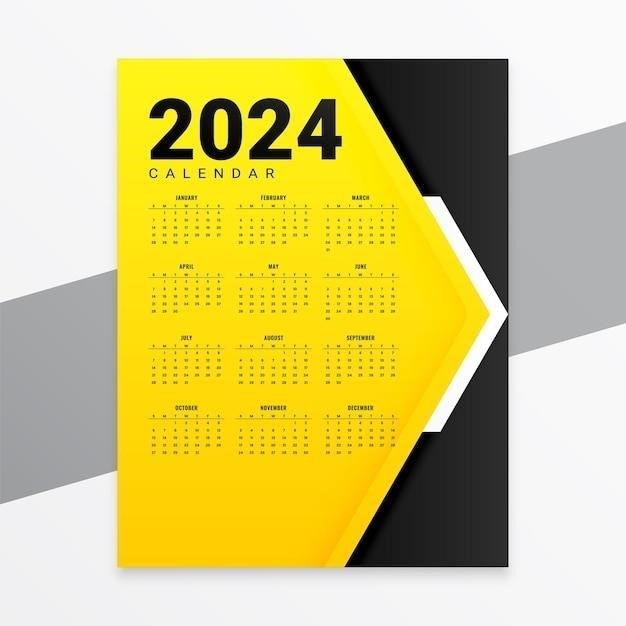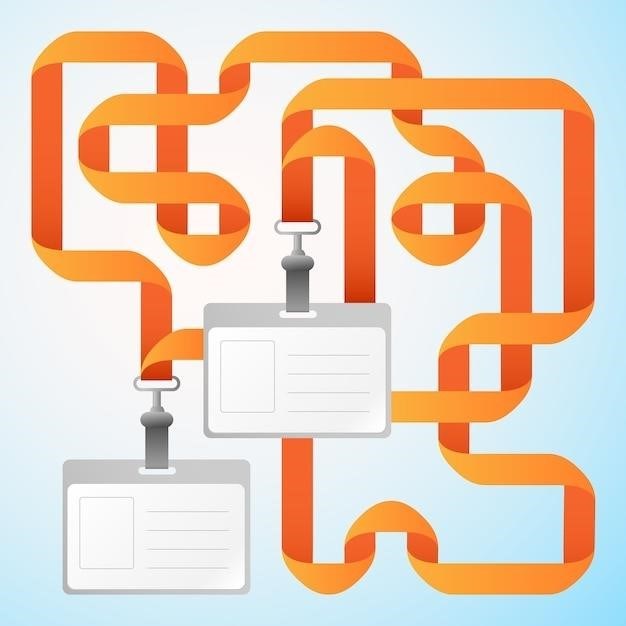amarillo isd calendar 24 25 pdf
Amarillo ISD Calendar 2024-2025⁚ A Comprehensive Guide
This comprehensive guide provides a detailed overview of the Amarillo ISD calendar for the 2024-2025 school year. It outlines important dates‚ holidays‚ and other relevant information for students‚ staff‚ and parents. You’ll find details on summer session‚ curriculum guides‚ enrollment numbers‚ and access to the calendar in both digital and PDF formats.
Key Dates and Holidays
The Amarillo ISD calendar for the 2024-2025 school year is packed with important dates and holidays that students‚ staff‚ and parents need to be aware of. Here’s a rundown of some key dates⁚
- First Day of School⁚ August 14‚ 2024
- Last Day of School⁚ May 21‚ 2025
- Labor Day⁚ September 2‚ 2024
- Veterans Day⁚ November 11‚ 2024
- Thanksgiving Break⁚ November 25-29‚ 2024
- Winter Break⁚ December 23‚ 2024 ー January 3‚ 2025
- Martin Luther King Jr. Day⁚ January 20‚ 2025
- Spring Break⁚ March 16-20‚ 2025
Please note that these are just some of the key dates and holidays. For a complete and updated calendar‚ it’s best to refer to the official Amarillo ISD website or the PDF version of the calendar.
Important Dates for Students and Staff
The Amarillo ISD calendar for the 2024-2025 school year includes several important dates specifically for students and staff. These dates cover a range of activities‚ from professional development days to early release schedules. Keeping track of these dates is crucial for both students and staff to ensure they are prepared for the school year.
- Teacher Prep Days⁚ August 8-9‚ 2024
- First Day of Summer Session⁚ May 27‚ 2024
- Last Day of Summer Session⁚ August 7‚ 2024
- Professional Learning Trade Day⁚ February 14‚ 2025 (Students have a holiday)
- Student Early Release Days⁚ Several throughout the year‚ check the calendar for specific dates.
- End of Grading Periods⁚ Dates vary by grade level and subject‚ refer to the calendar for specific details.
It’s important for students and staff to familiarize themselves with the calendar to ensure they are aware of all important dates and can plan accordingly.
Summer Session
Amarillo ISD offers a summer session program designed to provide students with opportunities for academic enrichment‚ skill development‚ and credit recovery. The summer session typically runs for a shorter period compared to the regular school year‚ with classes offered across various subjects and grade levels.
The 2024-2025 summer session dates are as follows⁚
- First Day of Summer Session⁚ May 27‚ 2024
- Last Day of Summer Session⁚ August 7‚ 2024
The specific courses offered during summer session may vary each year. Students interested in participating in summer session should consult the Amarillo ISD website or contact their school for detailed information about available courses‚ schedules‚ and registration procedures.
Accessing the Calendar

The Amarillo ISD calendar for the 2024-2025 school year is readily accessible online and in PDF format. The district’s website serves as the primary hub for accessing the calendar‚ providing a user-friendly interface with various viewing options. Users can easily navigate through the calendar by month‚ week‚ or day‚ highlighting key dates‚ holidays‚ and events.
To access the digital version of the calendar‚ visit the Amarillo ISD website and locate the “Calendar” or “School Calendar” section. For those who prefer a printable format‚ the district also offers a downloadable PDF version of the calendar. The PDF version allows users to print the calendar and display it in their homes or workplaces for easy reference.
By providing both digital and PDF versions‚ Amarillo ISD ensures that the calendar is accessible to everyone‚ regardless of their preferred method of access.
Calendar for Teachers and Staff
Amarillo ISD understands the unique needs of teachers and staff‚ providing a dedicated calendar tailored specifically for their schedules and responsibilities. This calendar incorporates important dates related to professional development‚ staff meetings‚ and other events relevant to the school’s operational activities.
The calendar for teachers and staff often includes details on professional learning days‚ faculty meetings‚ and deadlines for various administrative tasks. It may also highlight specific dates for curriculum planning‚ staff training‚ and other professional development opportunities. This dedicated calendar ensures that teachers and staff have a clear understanding of their work schedules and deadlines‚ fostering a well-organized and efficient environment.
Accessing the calendar for teachers and staff may require specific login credentials or access permissions‚ ensuring that sensitive information is only available to authorized personnel. The calendar serves as a valuable resource for teachers and staff‚ promoting effective communication and coordination within the district.
Curriculum Guides
Amarillo ISD provides comprehensive curriculum guides for each grade level and subject‚ ensuring that teachers have access to the latest educational resources and guidelines. These guides serve as a roadmap for instruction‚ outlining the learning objectives‚ standards‚ and assessments for each subject area.
The curriculum guides are typically available in digital format‚ allowing for easy access and updates. They often include detailed lesson plans‚ sample assessments‚ and recommended materials‚ empowering teachers to effectively plan and deliver engaging lessons that meet the unique needs of their students. These guides ensure consistency and alignment across the district‚ ensuring that all students receive a high-quality education.
Parents can also access these curriculum guides to gain a better understanding of the educational content their children are learning. This transparency fosters collaboration between parents‚ teachers‚ and the school district‚ creating a supportive learning environment for all students.
Important Information for Parents
Amarillo ISD is dedicated to keeping parents informed and involved in their child’s education. The district provides a wealth of resources and communication channels to ensure that parents have access to important information. The official school calendar‚ accessible in PDF format‚ outlines key dates‚ holidays‚ and school closures‚ allowing parents to plan accordingly and stay organized.
Parents can also access information on the district’s website regarding student performance‚ curriculum‚ and school events. The website also includes contact information for school staff and administrators‚ enabling parents to connect with their child’s teachers and discuss their academic progress.
Amarillo ISD encourages parents to attend school board meetings and participate in parent-teacher conferences. These events provide valuable opportunities for parents to voice their concerns‚ offer feedback‚ and stay informed about school initiatives and policies. The district’s commitment to parent involvement ensures a collaborative and supportive learning environment for all students.
Contact Information
For inquiries regarding the Amarillo ISD calendar‚ enrollment‚ or other school-related matters‚ parents and community members can contact the district’s central office or individual schools directly. The district’s main office is located at 7200 I-40 West‚ Amarillo‚ Texas 79106‚ and can be reached by phone at 806-326-1000 or 806-354-4378. The district’s website also provides contact information for each school within the district‚ including phone numbers‚ email addresses‚ and physical addresses.
For specific questions related to the Amarillo ISD calendar‚ parents can contact the district’s calendar coordinator or the school’s principal. The district encourages open communication and welcomes feedback from parents and the community. The contact information provided ensures that parents have easy access to the necessary resources and support.
Additionally‚ Amarillo ISD maintains active social media accounts on Facebook and Twitter‚ providing updates on school events‚ news‚ and important announcements. Parents are encouraged to follow these accounts for the latest information and stay connected with the district.
Enrollment Numbers
Amarillo Independent School District (AISD) has a significant student population‚ and its enrollment numbers reflect the district’s commitment to providing quality education to the community. For the 2024/2025 school year‚ AISD reported a total enrollment of 29‚371 students. This figure represents a slight decrease from the previous year’s enrollment of 29‚782‚ indicating a difference of 411 students. While there has been a minor decline‚ AISD continues to serve a large number of students within the Amarillo area.
The enrollment figures provide valuable insights into the district’s size and its impact on the community. These numbers are regularly tracked and updated by AISD to ensure accurate reporting and resource allocation. Parents and stakeholders can access this information on the district’s website or through official publications. Understanding enrollment trends helps AISD make informed decisions regarding staffing‚ facilities‚ and educational programs to meet the needs of its growing student body.
As a public school district‚ AISD is dedicated to providing a comprehensive education to all students‚ regardless of their background or circumstances. The enrollment numbers reflect the district’s commitment to serving the community and ensuring that every student has access to quality education.
Related Calendars and Schedules
Beyond the primary Amarillo ISD calendar‚ the district provides access to various other schedules and calendars relevant to different aspects of school life; These resources ensure that students‚ staff‚ and parents have a comprehensive understanding of important dates and events. One key resource is the AISD Master Calendar‚ which offers a comprehensive overview of school-wide events‚ holidays‚ and important dates.
For those interested in extracurricular activities‚ the AISD Athletics Calendar and Schedules provide detailed information on sports events‚ game schedules‚ and other athletic activities. Parents and students can easily keep track of their favorite teams and events through this dedicated calendar. Additionally‚ the district offers a separate calendar for summer school‚ outlining the dates and schedules for summer academic programs.
The AISD Testing Calendar provides a detailed overview of standardized testing dates and deadlines throughout the school year. This calendar helps students and staff prepare for important assessments and ensures that everyone is aware of the testing schedule. The availability of these related calendars and schedules demonstrates the district’s commitment to transparency and communication‚ ensuring that all stakeholders have access to the information they need to navigate the school year effectively.
Other Important Information
The Amarillo ISD calendar is a valuable tool for navigating the school year‚ but it’s important to remember that it’s subject to change. The district may need to adjust the calendar due to unforeseen circumstances‚ such as weather emergencies or changes in state regulations. It’s always best to check the official AISD website for the most up-to-date calendar information. The calendar is a valuable resource for parents‚ students‚ and staff‚ providing a clear overview of important dates‚ holidays‚ and events throughout the school year.
Remember that the calendar is just one part of the overall school communication strategy. Stay informed by subscribing to school newsletters‚ attending parent-teacher meetings‚ and checking the district’s official website for announcements and updates. By staying connected with the school community‚ you can ensure that you have all the information you need to support your child’s education and make the most of the school year.
Accessing the Calendar in PDF Format
The Amarillo ISD calendar for the 2024-2025 school year is conveniently available in PDF format‚ offering a printable and easily accessible version. This format allows for a clear and concise overview of important dates‚ holidays‚ and school events. The PDF can be downloaded and printed for reference throughout the school year. To access the PDF version of the calendar‚ visit the Amarillo ISD website and navigate to the “Calendar” or “School Calendar” section. The PDF file is typically located within the designated area‚ allowing for quick and straightforward access.
Having the calendar in PDF format offers several advantages. It provides a readily available and portable version for easy reference‚ whether at home‚ school‚ or on the go. The printable nature of the PDF format allows for convenient posting on refrigerators‚ bulletin boards‚ or other visible locations. By downloading the PDF‚ you can ensure that you have a readily available copy of the calendar for the entire school year.
Additional Resources
Beyond the official Amarillo ISD calendar‚ several additional resources can provide further information and insights into the 2024-2025 school year. These resources may include detailed schedules for specific schools‚ information on extracurricular activities‚ and updates on school events. The Amarillo ISD website often features dedicated sections for parents‚ students‚ and staff‚ providing access to a wide range of resources. Additionally‚ the district may utilize communication platforms like email‚ social media‚ or mobile apps to disseminate important announcements and updates related to the calendar.
Staying connected with these resources ensures that you have access to the most current information and can stay informed about any changes or adjustments to the school calendar. It’s also a good practice to check your school’s individual website or communication channels for specific details that might not be included in the general district calendar. By exploring these additional resources‚ you can gain a comprehensive understanding of the 2024-2025 school year and stay informed throughout the academic journey.


















